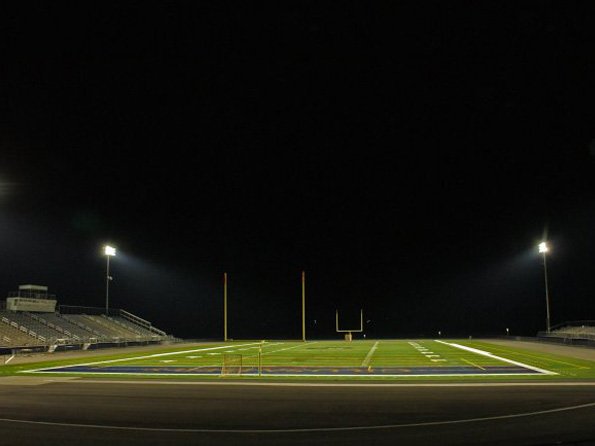Sports Lighting: How to prepare for upgrades or new installations
If you’re looking at installing a new sports field lighting system, no doubt you have a lot of questions. But the good news is there are answers.
First off, the Illuminating Engineering Society (IES) is a recognized authority, if not “the” large area lighting authority. They conduct very detailed research and compile massive amounts of data for almost all instances where large area illumination is needed.

This hopefully tells you that there is definitely a right way, or at least a well-researched way to plan, design, and install sports lighting. So if your lighting solution is based on a plan stemming from IES recommendations, then you should feel pretty confident that it’s going to be a good solution.
However, there are several of other items to consider in addition to making sure you select a design and equipment recommended by the IES.

What are you lighting?
Do you need more time in the day? Different sports require different lighting designs to ensure optimum viewing experiences. So what sport are you lighting? Baseball? Football? Soccer? All of the above? Again, the point of lighting up a sports field isn’t just for the sake of being able to see at night. The goal is to help improve visibility for both the players and fans.

Why are you installing sports lighting?
Are you looking to install new sports lighting because you’re upgrading an old system? Or, are you dealing with a brand new sports field that needs a brand new lighting system? Sometimes old systems can be adapted or replaced.That’s not always the case, but it certainly doesn’t hurt to have someone check before you rip everything out and start all over.

Where are you installing these lights?
As you’re processing your design in your mind and on paper, you also need to know that most cities, towns, and municipalities have their own requirements for how much spill and glare light they will allow. These aren’t recommendations. These are rules and ordinances that must be followed. So whoever is designing or building your lighting system will need to be aware of the local regulations.

Who is designing your lighting system?
There are several kinds of professionals who will be able to design your lighting system for you. Many Architects, Electrical Engineers, Lighting Designers, and System Manufacturers are capable of doing the job. Just make sure you’re working with someone who has a handle on all these components mentioned in this article.

Which utility company are you using?
The person you select from the previous question will likely have the answer to this question. But you should still make sure you determine from your utility company:
- What kind of power do they supply (Voltage and Phase)?
- Are there any Utility Company costs?
- Can they adequately meet the needs of your design?
The answers to these questions will have an influence on other design decisions.

How will your project be funded?
Most sports lighting installation projects often require a fair amount of funding. However, there are several ways to pay for these projects. You can publicly bid your project. You can use State Contract or Cooperative purchasing. And, of course, you can rely on private funds. The source of your funding may change the design of your project. So it’s wise to have that established from the beginning.
When researching your particular project, you’ll definitely run into these six questions and probably many other factors affecting the whole scope and cost of your project. But, it’s a worthy pursuit. The joy that comes from playing night games is undoubtedly in a league of its own, and making prime-time play possible is certainly a noble cause.
